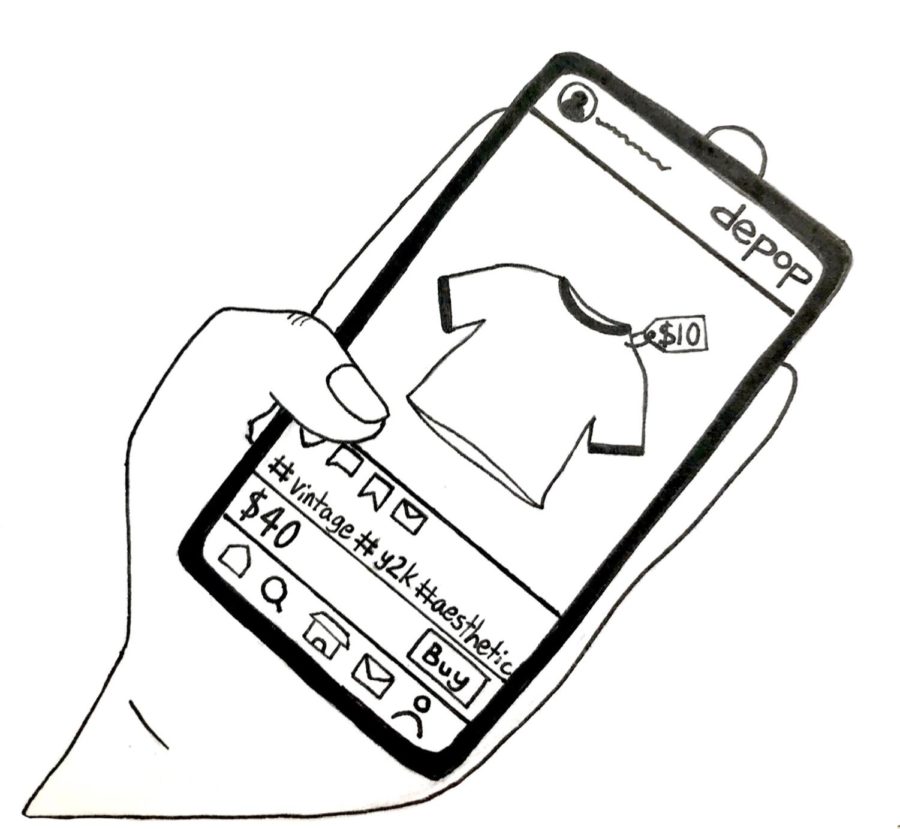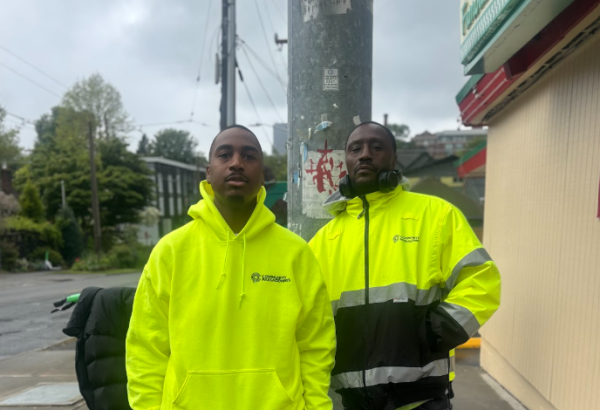Reduce, Reuse, Resell?
How Depop reselling contributes to the gentrification of thrift stores.
Throughout the past year, there has been a huge rise in the popularity of thrifting. What was once stigmatized and seen as shameful is now a rewarding and trendy activity. With the rise in thrifting, we’ve also seen an increase in reselling thrifted clothes on various sites. This brings up an important question: Is it ethical to buy large amounts of clothes that low-income families depend on as their primary source of clothing, and resell them for five times the price? The answer is no.
It’s understandable why people love thrifting; it’s a great, ethical way to buy cheap clothes that are no longer in use. Who wouldn’t want to have their dream wardrobe for half the price of one firsthand item? The affordable prices of practically new items, the ethical perspective of thrifting, and the rush of finding an amazing item is undeniable. It’s not the thrifting itself that’s the issue. It’s the support of these sites that has a direct connection with the gentrification of thrift stores, harming those who rely on thrift stores’ cheaper prices.
Although there are many reselling sites, Depop has become by far the most popular especially for the clothes that are trending on social media. Depop was founded in 2011, by Simon Beckerman, with their headquarters based in London. As of September 2021, Depop has roughly 20 million users, 5 million of which are in the US. There are Depop users in 147 countries, and 90 percent of them are under the age of 26.
The Depop platform is primarily used for people to buy and resell clothing, accessories, and shoes. In essence, it is a great app to get rid of clothes that are no longer in use and pass them onto people who will benefit from them. However, rather than selling their old clothes, many Depop users have converted the app into a platform to sell clothes from thrift shops. Goodwill outlets are especially frequented sources since clothes are priced by the pound, therefore extremely cheap.
As a frequent Goodwill Outlet customer, I’ve noticed groups of young adults wearing trendy outfits grabbing huge piles of clothes and sorting through only searching for name brands and items that match the trends. Taking large amounts of clothes from these stores is one of the biggest contributors to the overconsumption of thrifting.
This, in turn, leads to stores increasing their prices. At the Goodwills in Seattle, sweaters used to be $4.99 and are now $7.49. The jeans are $8.49 and used to be $6.99. Hardcover books used to be $1.00 and are now $2.49. This increase in price, due to these resellers, makes it much more difficult for people who rely primarily on thrift stores to afford their clothing.
So, next time you open the Depop app to buy that $45 vintage, y2k 2000’s, alternative, baby tee, leave it in the cart.






